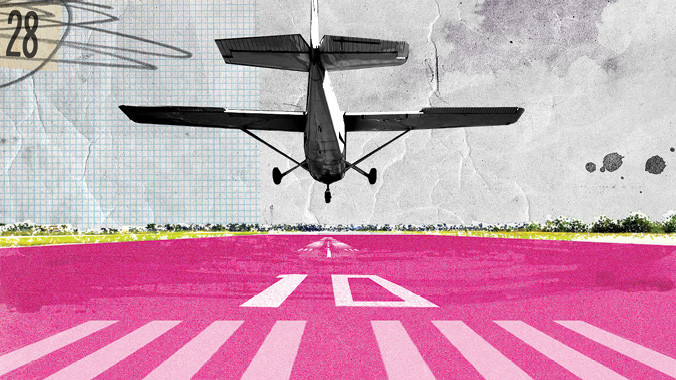Flight Lesson: Which runway?
An on-the-spot decision

A few days before my scheduled flight, my area had one of the biggest snowstorms on record. I continued to plan and prepare the flight data package I carry on my kneeboard: nav log, airport data sheet, ATIS blank, and airport/taxiway diagrams. I studied the airport runway layouts for prevailing winds in anticipation of how I would enter the pattern and which runway I was likely to use. I had a crosswind limitation on my endorsement of 5 knots with a total of 10 knots for the Cessna 172SP, so it was important (not that it isn’t always) to know and plan accordingly.
I was up early that morning to get the weather briefing and finalize my log sheets. Winds were within my limits at each destination, the sky was clear, and the temperatures were relatively warm. I packed my stuff and headed to the airport.
I met with my instructor, who meticulously reviewed my planning, questioning alternates and what-if scenarios. I would have to negotiate the Class B airspace around Philadelphia and the Class C airspace around Atlantic City, New Jersey, so connecting with flight following was important. I had checked the notices to airmen for my stops.
Out to the airplane, preflight complete, time to get in the air.
Takeoff and turn on course for the first waypoint were uneventful. Flight following added a layer of support to my scan, and times and checkpoints were good. At the second waypoint, I turned toward the south for checkpoint three. The snow-covered ground made it harder to pick out roads and other visuals, but things were going well. After checkpoint three, I turned slightly to the southwest and headed for my first landing point.
Ten miles out, I got the wind information: 270 at seven knots. Given that, Runway 28 was in order. I heard no other traffic in the pattern. I intended to fly over midfield for a teardrop entry into the downwind for Runway 28. I made radio calls at eight, six, four, and two miles out. All good, no chatter on the radio, and the place seemed empty.
Within a mile, I wasn’t prepared for what I heard come over the radio: “One-Two-Three-Alpha-Charlie lining up for departure Runway 10.” Wait, winds from 270—surely we should be using Runway 28? Doubt and anxiety started to flood in. I asked the pilot to confirm the active runway given the winds. The response came that Runway 10 is preferred. Not wanting to argue, I announced my intention to turn 180 to overfly the field in the opposite direction and prepare for a teardrop entry into the downwind for Runway 10. My plan had changed in a matter of seconds.
I overflew the field and entered the downwind, announcing my location as I went. I was on pattern altitude, good distance from the field, and everything was looking good. As I turned base, I was unprepared for the soon-to-be tailwind that pushed me close to the runway on my turn to final. I was also unprepared for the “flip” I got just as I turned final. A gust must have caught the outside wing and gave me a bit more roll than I wanted. Catching my breath, I leveled the wings and turned back to final.
By that point, I was out of sorts, too high, and way off the centerline. This was the perfect time to put my go-around training into practice. I reentered the pattern, corrected for the wind, and lined everything up just right. I knew I would be landing at a higher groundspeed and was anticipating more float. I had plenty of runway and the landing, while not one of my best, was solid and smooth.
When I got back, my instructor and I spent some time going over the flight. I asked about what I should have done differently when faced with the runway dilemma. The general consensus seemed to be that I should have waited for traffic to clear and then landed on Runway 28 given the winds. I learned that no matter how much planning and preparation you do, you have to be ready to change things up, and constant communication is key to safe landings at nontowered airports.
By Brian Curry
Illustration by Sarah Hanson
Have a Flight Lesson to share? Stories may be submitted via email to [email protected].
Flight Lesson offers the opportunity for pilots to learn from the experiences of others.


